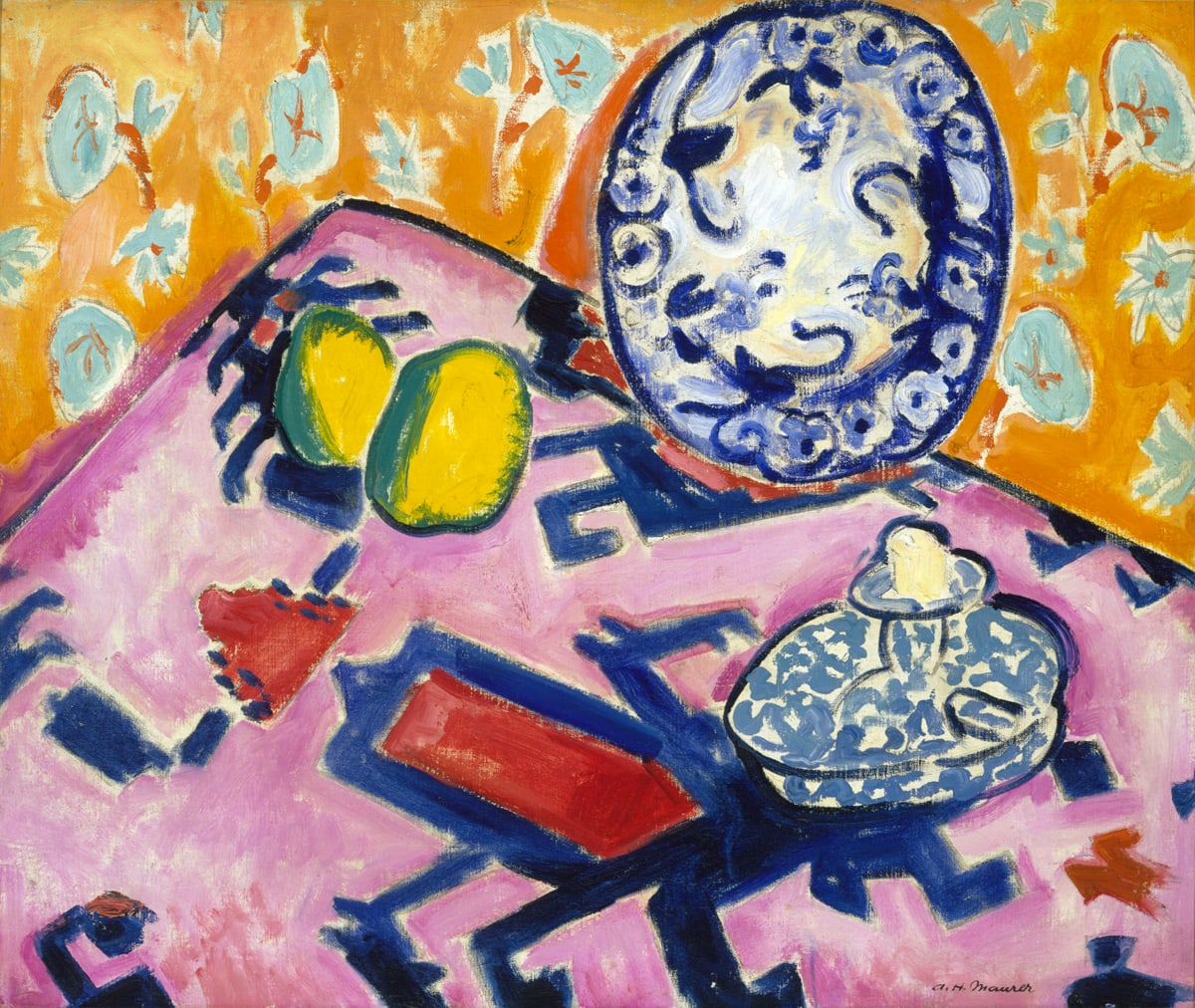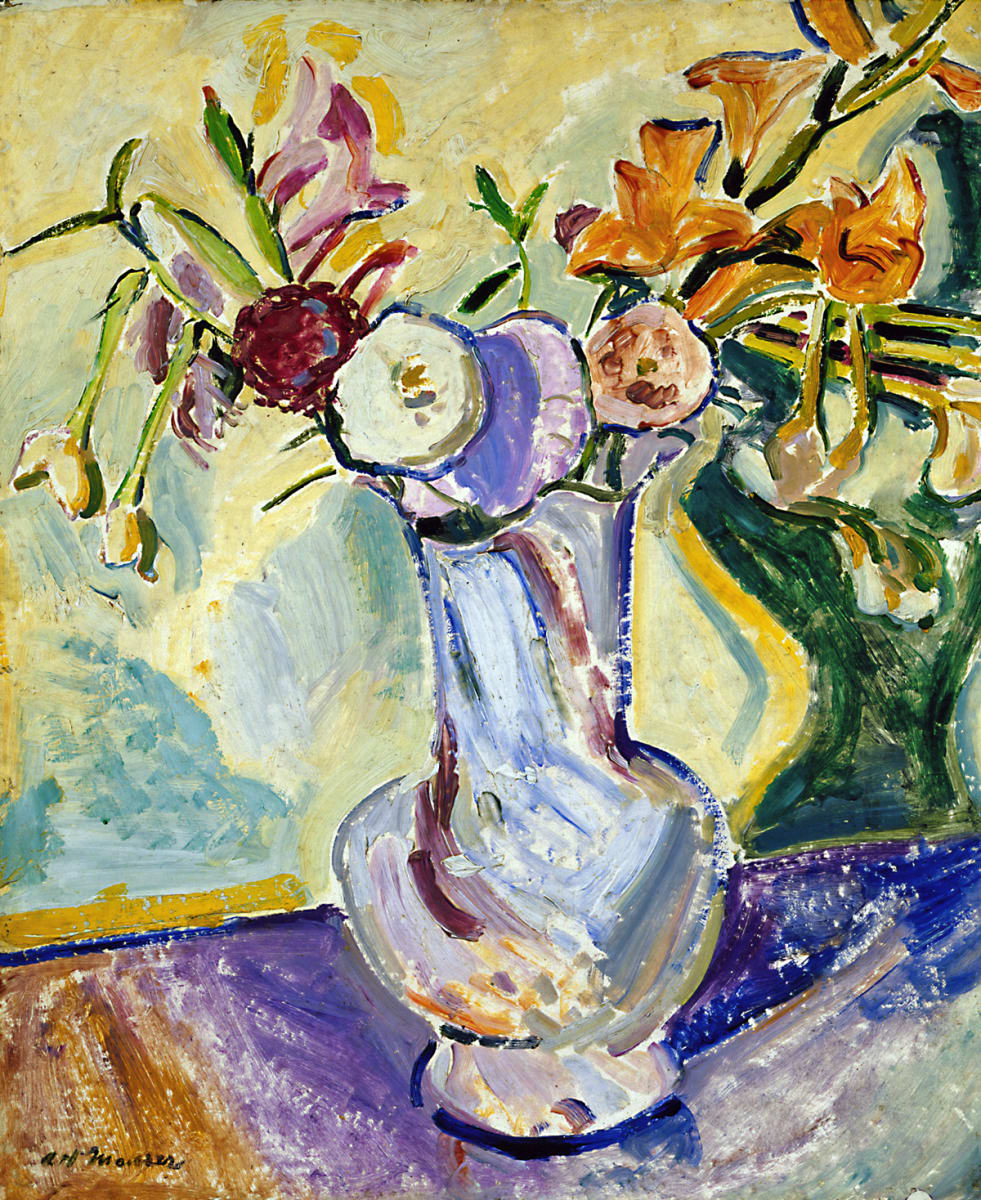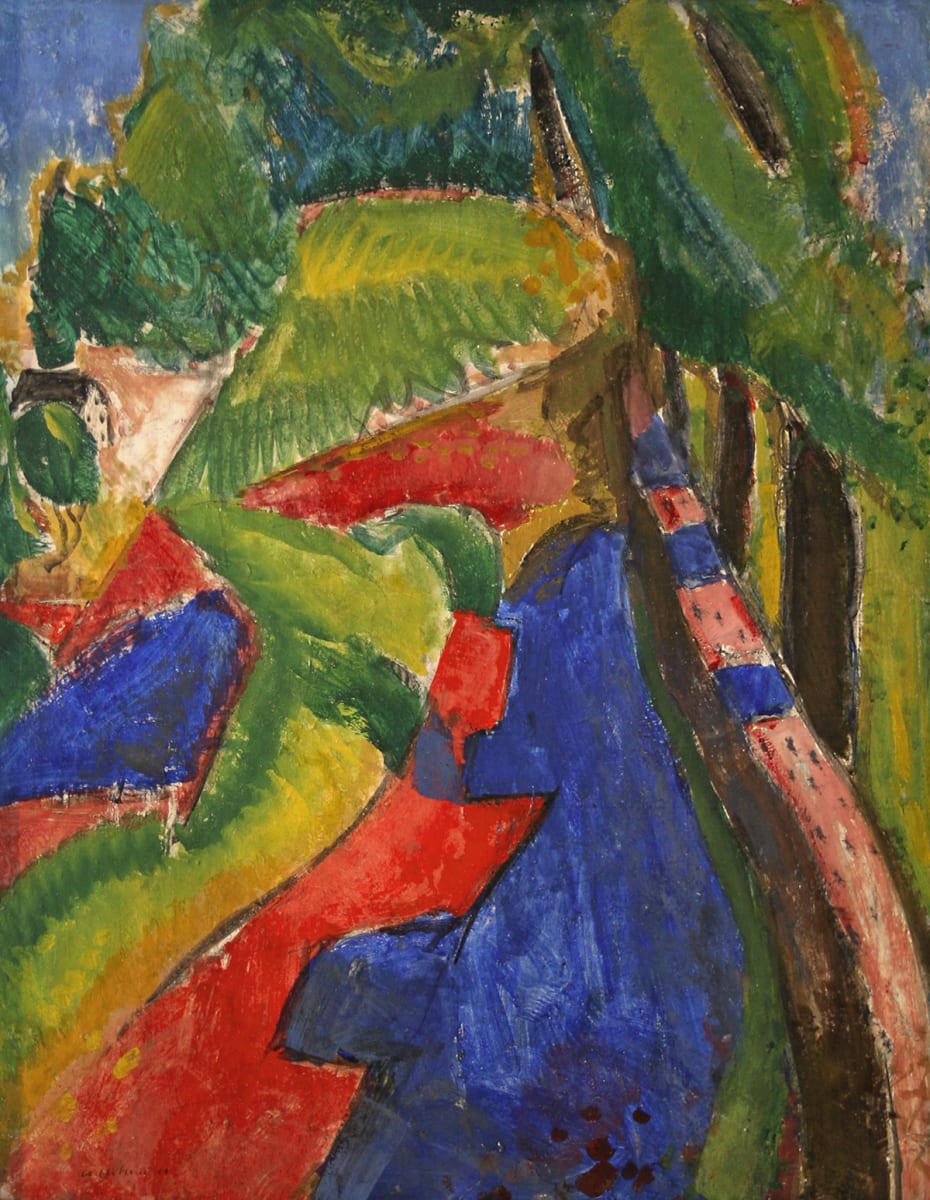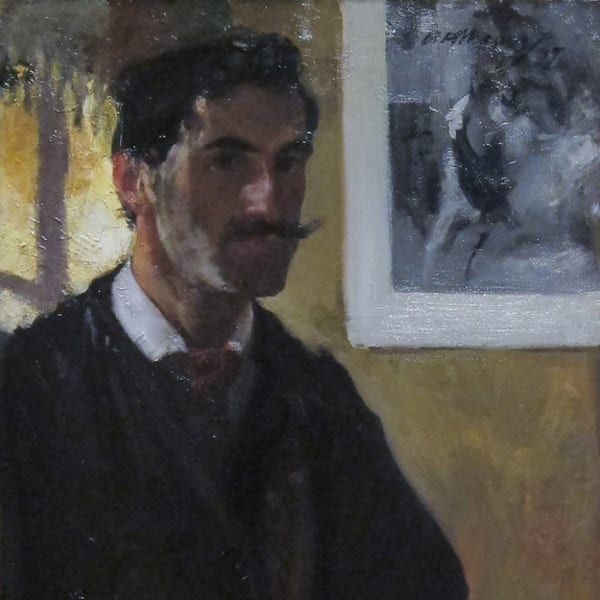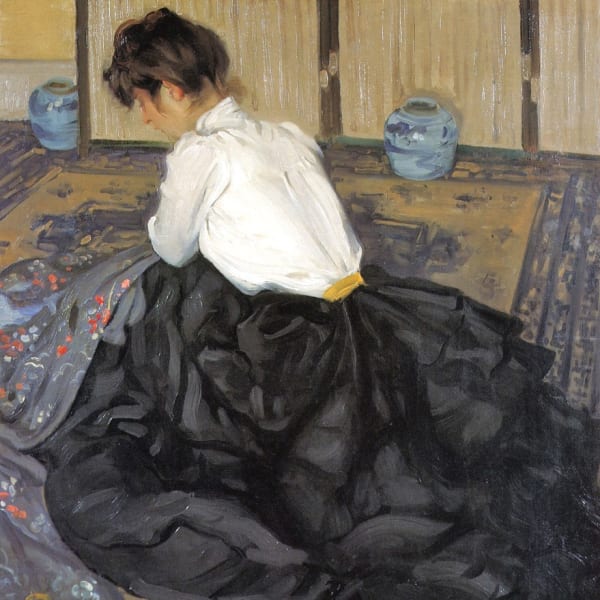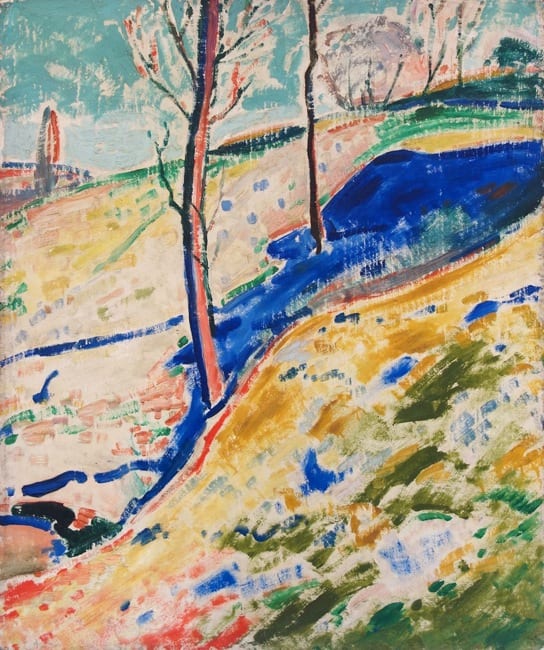
Maurer risked all with his departure from the accepted, academic painting at which he so excelled, abandoning it for a new artistic vocabulary.
One of the most fascinating aspects of the work of Alfred H. Maurer (1868-1932) is the clearly defined stages of radical change that appear in his work during his career. His story, both personal and professional is a highly interesting one that chronicles the evolution of this man’s journey and reveals him to be an artist of international character. In a retrospective fashion, Alfred H. Maurer: Aestheticism to Modernism, presents the enigmatic artist through these stylistic changes, and closely examines his artistic development through the years of his career. Beginning with his lovely Whistler-inspired portraits of women such as An Arrangement, 1901 (on loan from the Whitney Museum of American Art, New York), to his brilliantly colored early compositions, as exemplified by Fauve Still Life, circa 1908-10, to his complex Cubist works such as Still Life with Grey Table and White Columns, circa 1928-32, Maurer’s artistic evolution can be traced through the 106 works in the exhibition.
One of the most fascinating aspects of the work of Alfred H. Maurer (1868-1932) is the clearly defined stages of radical change that appear in his work during his career. His story, both personal and professional is a highly interesting one that chronicles the evolution of this man’s journey and reveals him to be an artist of international character. In a retrospective fashion, Alfred H. Maurer: Aestheticism to Modernism, presents the enigmatic artist through these stylistic changes, and closely examines his artistic development through the years of his career. Beginning with his lovely Whistler-inspired portraits of women such as An Arrangement, 1901 (on loan from the Whitney Museum of American Art, New York), to his brilliantly colored early compositions, as exemplified by Fauve Still Life, circa 1908-10, to his complex Cubist works such as Still Life with Grey Table and White Columns, circa 1928-32, Maurer’s artistic evolution can be traced through the 106 works in the exhibition.
An aim of this exhibition and the substantial accompanying catalogue is to demonstrate through documented evidence and educated suggestions, the motivations and influences that affected Maurer and created the atmosphere in which he worked. His association with the art of Matisse, for example, was pivotal to his own artistic evolution, opening him up to original ways of seeing and galvanizing him to experiment. It was, in fact, this newfound sense of freedom that Maurer gained in Paris that prompted his conversion to modernism. Similarly, the intellectual discussions he had with his friend Leo Stein influenced his thinking, enhanced his exposure to the work of fellow artists, and directed his vision in a unique way. Furthermore, his personal life, and in particular his’ relationship with his father, were both nourishing and detrimental to his development. Maurer risked all with his departure from the accepted, academic painting at which he so excelled, abandoning it for a new artistic vocabulary. He flourished within his exploration of modernism and the essence of “Maurer—the painter” evolved. It was a natural fit and proved to be the true avenue of expression for him. Few American artists were as dedicated to developing an avant-garde ideology.
Hollis Taggart Galleries has long believed in the importance of Maurer as a leading protagonist in the development of modernism in this country and as a significant link between the European modernists and the American audience. With many museum loans and works from private collections as well as paintings which will be for sale, this show offers a unique opportunity for collectors and enthusiasts to have a comprehensive overview of this artist’s body of work. The gallery’s twentieth-century art historian, Stacey Epstein, is curator of the exhibition and author of the catalogue’s enlightening essay; her forthcoming Ph.D. dissertation is devoted to Maurer. The extensive research she has done has unearthed interesting new facts, such as her discovery as to the actual extent of Maurer’s relationship with renowned collector Albert C. Barnes. Similarly, Ms. Epstein has astutely added her own interpretations of many of the paintings, giving the show a new and energetic approach.
The exhibition ends where Maurer left his audience, with the hauntingly provocative female portraits that are the most puzzling part of all of his work. They have been the topic of much speculation as to their meaning and derivation. Whether they are in fact disguised self-portraits of an alter ego or yet another turn in his stylistic development, we perhaps can never fully resolve. Yet as with most of Maurer’s lifetime of work, their images are not easily forgotten. The viewer is pulled into the compositions and challenged, and comes away with a more complete understanding of this important painter.








